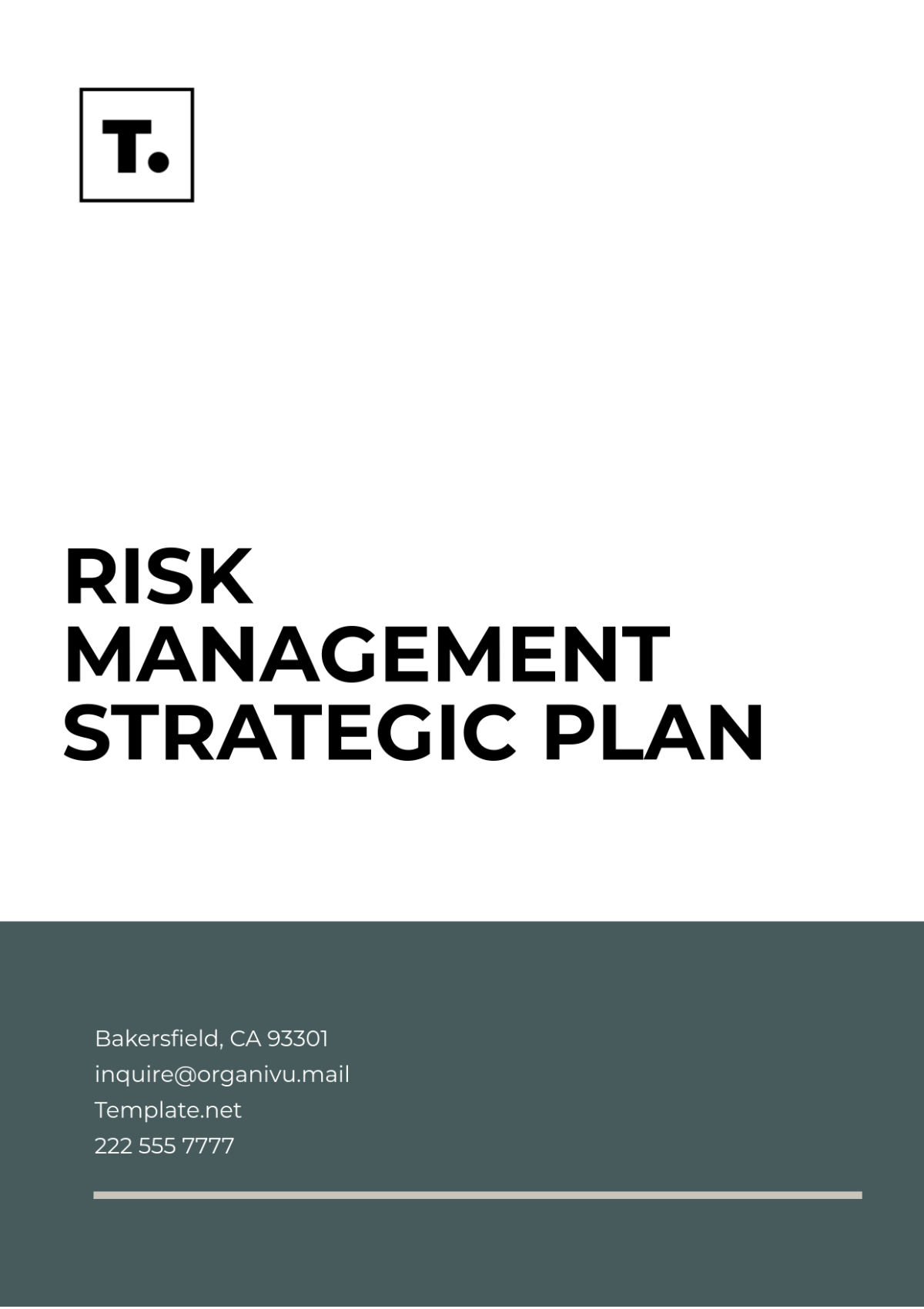Free Risk Management Strategic Plan

Prepared by: [Your Name]
Company: [Your Company Name]
Date: January 1, 2050
I. Executive Summary
This Risk Management Strategic Plan outlines our organization's proactive approach to identifying, assessing, and managing risks that could hinder the achievement of our strategic goals and objectives. In an increasingly complex and rapidly changing environment, our purpose is to ensure operational continuity and minimize potential negative impacts on our stakeholders. Our comprehensive strategies include risk avoidance, reduction, sharing, and acceptance, tailored to meet the unique challenges of the coming decade.
II. Introduction
The objective of this plan is to provide a structured framework for risk management, enabling our organization to effectively anticipate and respond to challenges that may arise in a dynamic landscape. This plan aligns with our commitment to safeguarding our assets, maintaining our reputation, and ensuring operational resilience as we navigate through technological advancements and global uncertainties.
III. Risk Assessment
A. Identification
Risks are identified through various methods, including regular assessments, stakeholder consultations, environmental scanning, and analysis of industry trends. Common risks anticipated for 2050 include:
Operational Disruptions: Risks arising from supply chain interruptions, natural disasters, and pandemics.
Financial Uncertainties: Fluctuations in global markets, interest rates, and currency exchange.
Regulatory Changes: New regulations related to environmental sustainability, data privacy, and labor practices.
Cybersecurity Threats: Increasing sophistication of cyber attacks targeting organizational data and operations.
Technological Risks: Challenges associated with the rapid adoption of emerging technologies, such as AI and blockchain.
B. Analysis
Each identified risk is analyzed to determine its potential impact and likelihood, using quantitative and qualitative methods. This analysis helps prioritize risks based on their potential disruption to our operations and the likelihood of occurrence.
C. Evaluation
Risks are evaluated using a risk matrix, which classifies them based on severity and potential impact on our strategic objectives. The matrix includes:
Critical Risks: Immediate action is required; this could severely impact operations.
Moderate Risks: Action is recommended; manageable with current resources.
Low Risks: Minimal impact; monitored regularly.
IV. Risk Mitigation Strategies
A. Avoidance
Strategies for risk avoidance include:
Strategic Planning: Engaging in detailed feasibility studies before initiating high-risk projects.
Policy Development: Establishing strict guidelines for decision-making processes that align with our risk appetite.
B. Reduction
Key initiatives to reduce risk impact involve:
Implementing Strong Internal Controls: Regular audits and assessments to enhance operational integrity.
Enhancing Staff Training and Awareness: Developing a comprehensive training program on risk awareness and management for all employees, including simulations for crises.
Regular Maintenance and Updating of Systems: Ensuring that all technology and infrastructure are kept up to date to prevent failures or breaches.
C. Sharing
Risk-sharing strategies include:
Insurance Policies: Utilizing tailored insurance coverage to transfer certain risks to external entities.
Partnerships and Collaborations: Engaging in joint ventures that distribute risk among partners, especially in large-scale projects.
D. Acceptance
Low-impact risks may be accepted with appropriate contingency plans. Examples include:
Contingency Planning: Developing action plans for scenarios such as minor operational disruptions.
Resource Allocation: Setting aside resources to address accepted risks if they materialize.
V. Roles and Responsibilities
Defined roles ensure accountability in the risk management process:
Role | Responsibility |
|---|---|
Risk Manager | Oversee the overall risk management process and monitoring. |
Department Heads | Identify and manage risks specific to their departments. |
Risk Committee | Provide guidance, review risk management practices, and recommend updates to the plan. |
Compliance Officer | Ensure adherence to regulatory requirements and best practices. |
VI. Monitoring and Reporting
Regular monitoring is crucial for tracking risk levels and ensuring effective management. Comprehensive reports are generated quarterly to inform leadership and stakeholders about the risk landscape. Key components of the monitoring process include:
Key Risk Indicators (KRIs): Development of KRIs to signal potential risk exposures.
Performance Metrics: Measuring the effectiveness of implemented risk mitigation strategies.
VII. Review and Updates
The Risk Management Strategic Plan is reviewed annually to incorporate changes in the risk environment, technological advancements, and feedback from stakeholders. Updates are made to strengthen strategies and policies, integrating lessons learned from past experiences and evolving best practices in risk management.
VIII. Appendices
A. Glossary
Definitions of key terms used in this plan, such as:
Risk Appetite: The amount of risk an organization is willing to accept in pursuit of its objectives.
Contingency Planning: Preparing alternative plans to address potential future events that could disrupt operations.
B. Risk Matrix Example
A sample risk matrix illustrating the evaluation of potential risk impacts and likelihoods, including categories for critical, moderate, and low risks.
- 100% Customizable, free editor
- Access 1 Million+ Templates, photo’s & graphics
- Download or share as a template
- Click and replace photos, graphics, text, backgrounds
- Resize, crop, AI write & more
- Access advanced editor
Protect your organization from risks with our Risk Management Strategic Plan Template from Template.net. This editable, customizable template provides a comprehensive framework for identifying, assessing, and mitigating risks. Fully editable in our AI Editor Tool, you can adjust risk factors, timelines, and mitigation strategies based on your organization's needs. Perfect for businesses and institutions, this template helps ensure you’re prepared for potential challenges and can manage risks effectively.





























